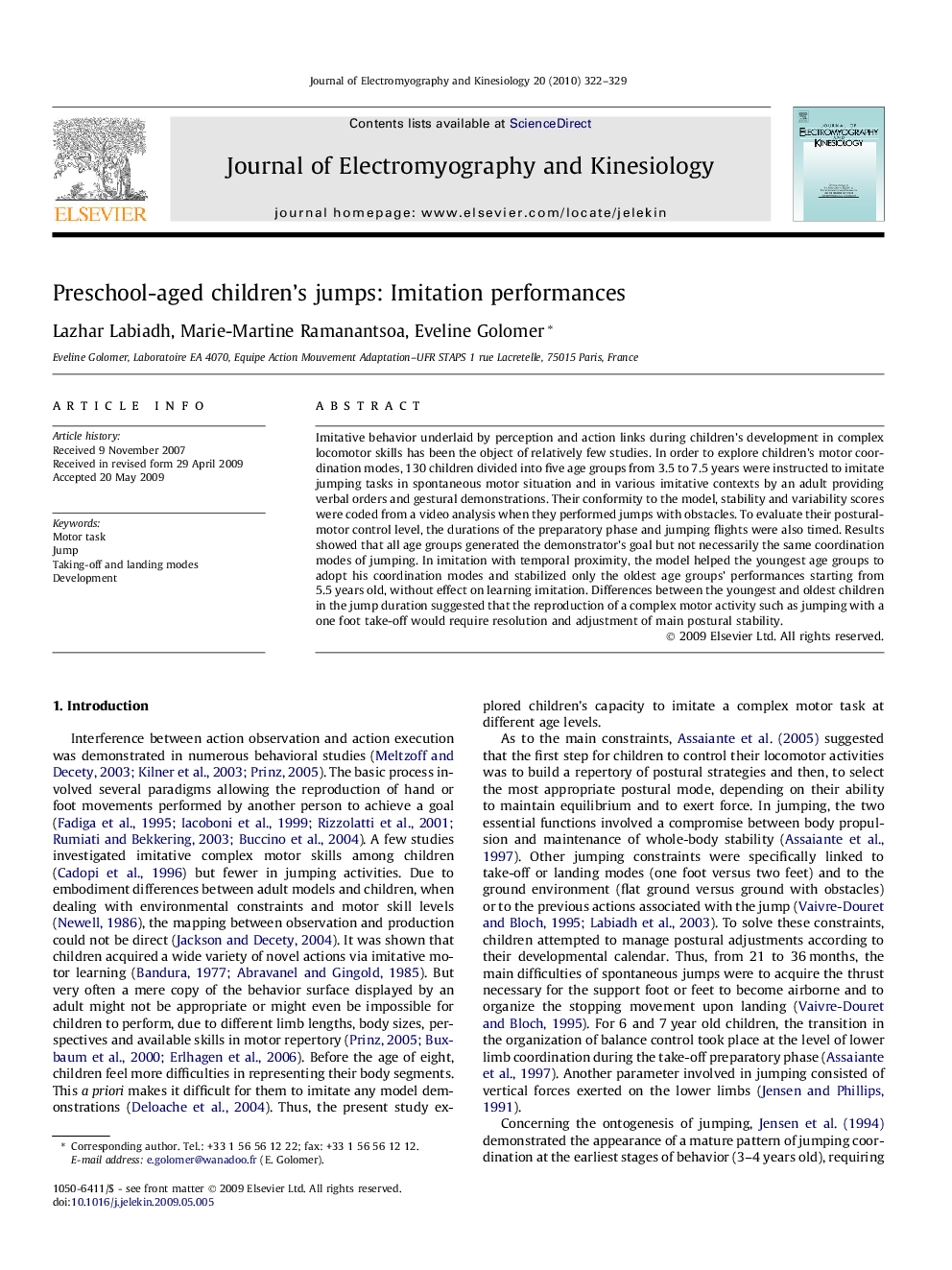| Article ID | Journal | Published Year | Pages | File Type |
|---|---|---|---|---|
| 4065294 | Journal of Electromyography and Kinesiology | 2010 | 8 Pages |
Imitative behavior underlaid by perception and action links during children’s development in complex locomotor skills has been the object of relatively few studies. In order to explore children’s motor coordination modes, 130 children divided into five age groups from 3.5 to 7.5 years were instructed to imitate jumping tasks in spontaneous motor situation and in various imitative contexts by an adult providing verbal orders and gestural demonstrations. Their conformity to the model, stability and variability scores were coded from a video analysis when they performed jumps with obstacles. To evaluate their postural-motor control level, the durations of the preparatory phase and jumping flights were also timed. Results showed that all age groups generated the demonstrator’s goal but not necessarily the same coordination modes of jumping. In imitation with temporal proximity, the model helped the youngest age groups to adopt his coordination modes and stabilized only the oldest age groups’ performances starting from 5.5 years old, without effect on learning imitation. Differences between the youngest and oldest children in the jump duration suggested that the reproduction of a complex motor activity such as jumping with a one foot take-off would require resolution and adjustment of main postural stability.
